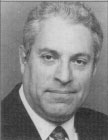The Metal of Civilization Standards B115 and B49
Copper Applications in General Interest Area
Copper is one of the most pervasive metals in our society. About 16.7 million metric tons of copper is produced in the world annually, of which about 20 percent is produced in the United States.
Used in just about any electrical motor, from your refrigerator to your washing machine, as well as plumbing and sanitary systems throughout the world, copper has contributed more to the well-being of the human race than nearly any other metal, says Paul Tandler, chairman of subcommittee B05.07 on Refined Copper, part of Committee B-5 on Copper and Copper Alloys. Although he admits he may be biased, he considers copper "The Metal of Civilization."
Accordingly, we might consider standard B115, Standard Specification for Electrolytic Cathode Copper, "The Specification of Civilization." B115 is accepted worldwide as the ultimate standard for the production and commercial trading of copper, says Tandler. The document establishes the requirements for electrolytic copper cathode-electrorefined and electrowon. Electrolytic copper cathode is produced throughout the world and is the base material for the numerous rolled, drawn, extruded, cast, and forged products made from copper and its alloys. "This pure form of the metal is required in the production of products for the electrical, electronic, communications, plumbing, and construction industries, among others," he says.
A table included in B115 indicates the required chemical composition of these high-purity cathodes. The table shows the allowable levels of impurities for both Grade 1 and Grade 2 cathodes, including limits to selenium, tellurium, bismuth, antimony, lead, arsenic, iron, nickel, tin, and more in trace quantities. In addition to chemical composition requirements, B115 also includes physical property requirements, as well as two annexes providing sampling and specimen preparation information and test methods for determining compliance with chemical composition requirements.
The most common uses of cathode are for the production of rod and wire. More than half of all the copper in the world is used to make electrical conductor grade wire, explains Horace Pops, chairman of Committee B-5. And it is the most recycled of all metals; only 12 percent of the 5.8 trillion pounds of known copper ore has been mined throughout history. In fact, nearly all of the mined copper is still in use today.
Important to note, says Pops, is the fact that B115 has stood the test of time and since it was first published, in 1938, has been continually revised to address new technology. "After 60 years, the standard is as important as it ever was, and it will be for years to come," he says.
Older cousin to B115 is B49, Standard Specification for Copper Redraw Rod for Electrical Purposes, which was first developed in 1923. The introduction of continuous wire rod technology in the '70s was an important innovation in the copper industry (see feature article by Arthur Cohen, p. 34). These changes in production techniques prompted numerous changes to B49. The document covers copper redraw rod in diameters from 1/4 to 1 3/8 in. (6.4 to 35 mm) which is suitable for further fabrication into electrical conductors. Like B115, the document also covers chemical composition, and mechanical properties and includes test methods addressing chemical analysis, tensile elongation, electrical resistivity, embrittlement, and more. In recent years, B49 has been expanded to include requirements and test methods for the thin oxide film that is present on the surface of rod and wire. If excessive, manufacturing problems might occur downstream, affecting drawability, solderability, and the adhesion of surface coatings.
In the form of cathodes, bars, coils, rods, or any other shape, copper is one of the most versatile, malleable, and workable metals, says Tandler. "We are blessed on this earth to have it," he says. And we are equally blessed by Committee B-5's work on standards B115 and B49 to make it pure, functional, and readily available.
Art Cohen
 Arthur Cohen, consultant to the Copper Development Association Inc. (CDA), recently retired from his position as manager of Standards and Safety Engineering with CDA. The 1996 chairman of the ASTM Board, Cohen has received the ASTM Award of Merit (1977), the Committee B-5 Certificate of Appreciation (1981), the Copper Club/Committee B-5 Award (1983) and the SES Leo B. Moore Medal (1992), among many other awards. He has authored over 50 articles and several chapters for technical handbooks.
Arthur Cohen, consultant to the Copper Development Association Inc. (CDA), recently retired from his position as manager of Standards and Safety Engineering with CDA. The 1996 chairman of the ASTM Board, Cohen has received the ASTM Award of Merit (1977), the Committee B-5 Certificate of Appreciation (1981), the Copper Club/Committee B-5 Award (1983) and the SES Leo B. Moore Medal (1992), among many other awards. He has authored over 50 articles and several chapters for technical handbooks.
ASTM Committee B-5 salutes the Society's centennial. The committee was formed in 1929 as an outgrowth of Committee B-2 on Nonferrous Metals and Alloys. Its mission was to create copper standards in cooperation with the Copper and Brass Research Association and its successor, the Copper Development Association Inc.
This seven-decade partnership with ASTM has established worldwide-accepted standards that reflect the great advances and technological changes which have occurred with the industry. Canada has also completely embraced ASTM copper standards.
There are many breakthrough areas where ASTM standardized products and methods have been introduced.
Also in this Issue:
- Adjusting to Dramatic Changes Occurring in the Interconnect Market - What’s Next for the World of Interconnects?
- The Metal of Civilization Standards B115 and B49
- Copper Motor Rotor Research Update
- Copper: Technology & Standards
- New Copper Alloys - Summer 1998
